Wishing you a very happy holiday season – from me to you
Author: Jen
-
Last Minute Gift Guide
It’s that time of year when nearly everyone is gifting – no matter their tradition. There’s a joy to receiving a gift that can only be exceeded by the thrill of giving the perfect (or near perfect) gift. And that’s the rub – because finding the perfect (or near perfect) gift can be a challenge.
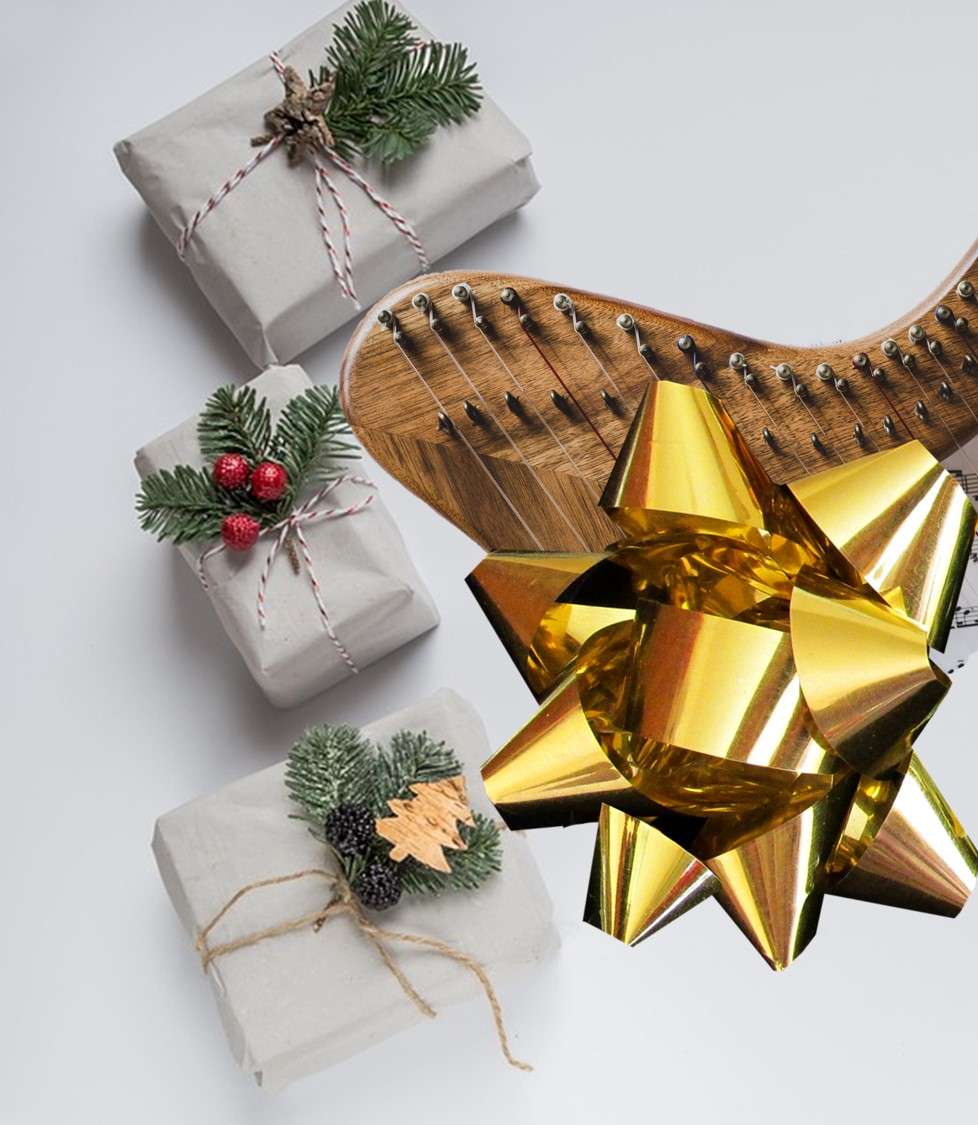 Those who love you and love your harping would also love to give you an appropriate gift that will not only encourage you to keep playing but also will be something you want and that fits perfectly. So this week, ten last minute gifts you can suggest to someone to buy for you (or to buy yourself – nothing wrong with getting the joy of giving and the thrill of getting!).
Those who love you and love your harping would also love to give you an appropriate gift that will not only encourage you to keep playing but also will be something you want and that fits perfectly. So this week, ten last minute gifts you can suggest to someone to buy for you (or to buy yourself – nothing wrong with getting the joy of giving and the thrill of getting!).1. Tuning wrench (yes, another one). Whether you call it a wrench, a key, or a thingamabob, you need one when you need one and having an extra one to keep in your case so you never don’t have one makes this a great gift! Ranging from completely simple and inexpensive to incredibly complicated (and costly) you can always leave a photo or the appropriate URL laying around to assure you get the right one for your harp.
2. Snark Tuner. Compact, accurate, easy to use, and cute – what more could you ask of a tuner? I have one of these. Put it on the tuning key (or clip in in one of the holes in the back) and you’re good to go, no matter how many other people are tuning around you!
3. String buttons or leather lace. I recently bought some of the new Dusty Strings String Buttons – and just in time before two strings on my Dusty 36 broke! I thought they were clever, but now that I’ve had to use them, I l-o-v-e them! You can find them here. Now, I get that not everyone is ready to move to the String Buttons in which case you might prefer to go for my previous favorite solution – leather shoelace (like this one). Either solution gets you a strong knot that won’t buzz.
4. Candle Stick-um. This wax adhesive is great when you use a spline in a string knot on the higher, thinner strings. It holds everything together while you’re getting the knot set – no untying, no dropping the spline, no needing three hands to get everything put together. I got it online like this but you might be able to find it in a store near you.
5. Gloves. No matter where you live or when you’re playing, nothing will make you feel less like playing than not being able to feel your fingers! But gloves are an investment, and you have to keep track of them, and they’re in your other coat pocket and they don’t go with your outfit. Ok, all of those are excuses. The small stretchy gloves are perfect – they’re in small, inexpensive, go with everything, and because they come in bundles, you can have them everywhere. Seriously, I have them scattered all over the place – in my car (actually 3 pairs in there), in my case pocket, in my purse, in my gig bag, and in the pockets of every coat (including my raincoat). And, because they’re really inexpensive, if you lose one, it’s not so bad. While I’m not a fan of urging you to shop at evil vortex of commerce, they do have them there.
6. Hand Warmers. Sometimes even those little gloves just won’t do the trick (like that time there was a nor’easter during the national competition?). Then you might be glad to have hand warmers like these. They last a long while and I know they work!
7. Hand Lotion. Winter is hard on the skin on your hands. With all the washing and drying and cold air and heated air and dry air, using hand lotion becomes a no-brainer. Failing to keep your hands lotioned leaves you open to getting split (and bleedy) skin, hang nails, flakiness, and leaves you susceptible to infection. All that is easily avoidable, and you should be better about this than I am. I have lotions at each sink and little travel containers in my harp case and purse – but it works best if you use it!
8. A Journal Book. You didn’t think I’d leave this off, did you?! The first step to keeping a journal is to have a book for it! Whatever is the right size, shape, and paper for you is the right one.
9. Tea or cocoa. You want to be ready when it’s time to take a break from practicing. Or to have a small refreshment while reading your music or practicing in your head or planning your practice. Whether you’re “Team Tea” or in the “Cocoa Club” it will be nice to know you have it when you are ready!
10. Lesson Gift Cards. While I don’t usually launch into shameless commerce here, lessons do make a great gift. You don’t have to have them with me – I’m sure others would also offer them (but of course, I’d be delighted if you did get them from me). For the holidays, I am offering a cute printable gift certificate and in December if you buy ten lessons, you’ll get 11!*
The links provided are for information and aren’t an endorsement of any particular retailer. Once you know what you’re looking for, you can make your own decisions on where to buy.
If you have other ideas, please share them – we’re at the holiday gift buying crunch and I’m sure more ideas would be appreciated by all!
* Legal stuff – Offer valid for new or current students. Subject to availability, all lessons must be completed in 2022. Cancellation and other studio policies apply.
-
Theory – All in Good Time
The other day I was torturing one my students with an element of theory. She didn’t look happy about it.
 I’ve seen wet cats look happier.
I’ve seen wet cats look happier. In my usual way, I blathered on and one and on about the point and what it meant and why it was important and how it could inform playing. You know, the usual.
Her eyes glazed over.
The learning had to be salvaged (because contrary to popular belief, I really do not do this to torture anyone, but rather to prime the pump).
So, I followed all those words, thoughts, and deeds with this,
“Don’t worry – you’re not going to remember any of that anyway”
And I meant it (I’m motivational like that).
Recently I decided that my piano technique needed woodshedding. So I broke out a couple of books that I loathe – but keep, because, like Kaopectate, Mercurochrome, or VapoRub, they are horrid, but serve a purpose. In the margin, in the hand of my teacher, are notes that I’d forgotten about. They were all theory elements, put there to help me learn.
She had the right end of that stick! She didn’t teach theory by rote out of a book. Her point was that it will all come in good time – learning the rules by using them. She told me things and left them to marinate. I hadn’t realized until then how much of my teaching I had learned from her!
Because I dump a lot of theory into heads, knowing that it may not (yet) be comprehensible. But also knowing that, while most of it will flow in one ear and out the other, little bits will stick. You know, like glitter. But you won’t even know it’s there, marinating, waiting for the time when it will all make sense.
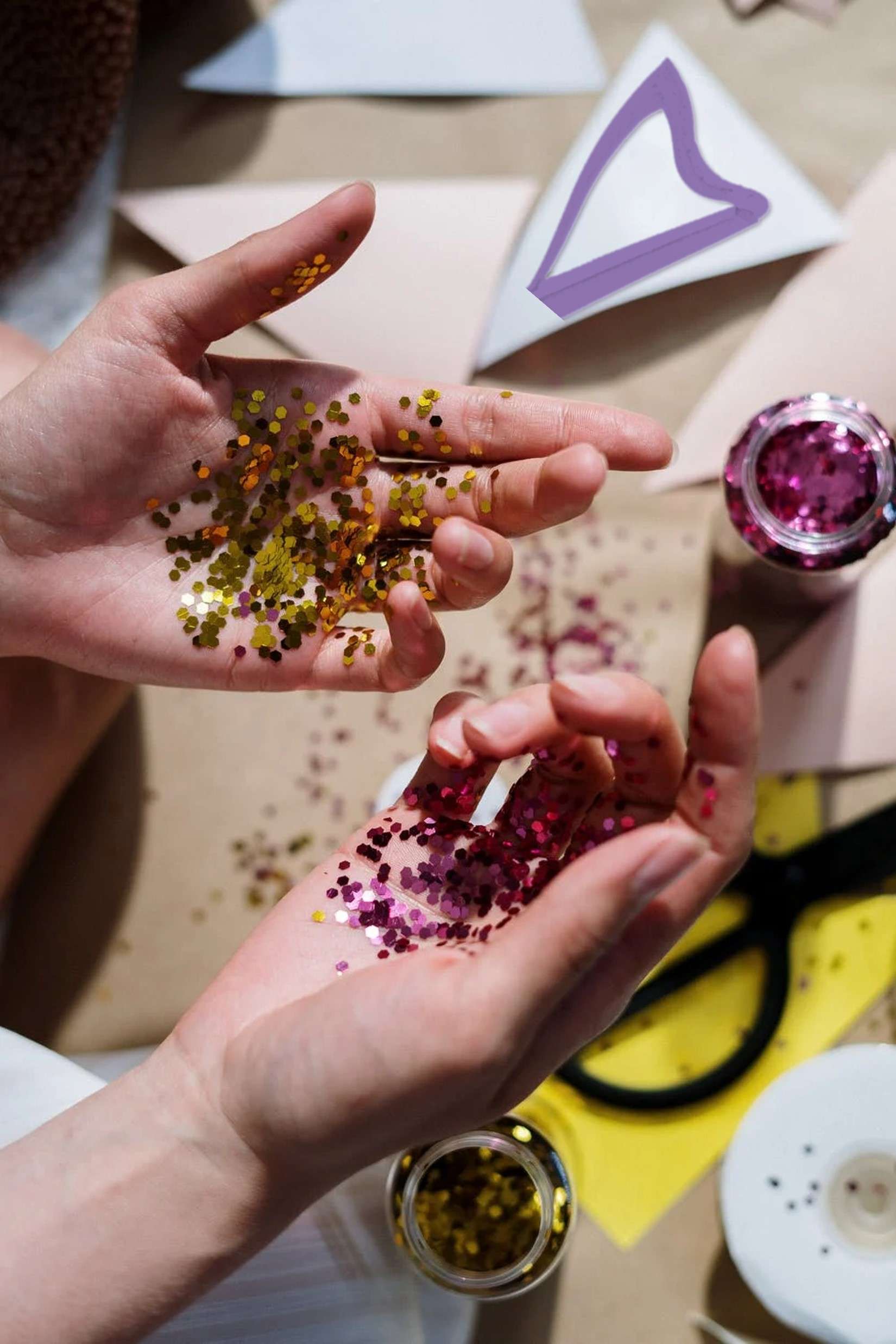 In its own good time, other bits of theory glitter will also stick. It will be a gradual process (like the formation of sedimentary rock). But as time passes – learning, playing, picking up more glitter – some of the glitter will catch the light.
In its own good time, other bits of theory glitter will also stick. It will be a gradual process (like the formation of sedimentary rock). But as time passes – learning, playing, picking up more glitter – some of the glitter will catch the light.And suddenly, some arcane theory thing I droned on and on and on about in the past will, in a flash of glittery brilliance, become an insight with clarity and usefulness!
And I’m ok with that. Because developing your own insight in a glittery flash may require a good long time, but it will be more meaningful – and sensible – than if you had memorized a bunch of theory facts.
There will be things that become understandable rather quickly and easily. And other things will take (what feels like) eons. Those things will make you work for it, tease you into thinking you’ve got it before kicking sand in your face, before suddenly it catches the light, glints and then clicks and makes sense.
That’s ok. Remember, there are loads of things in theory you might never learn (because you won’t use them, or they don’t apply to your instrument (I give you alto clef as an example)). So you might not develop an encyclopedic knowledge of music theory. Oh well.
What you will get – all in good time – is a strong understanding of the rules you can use.
In a steady stream of content that may seem incomprehensible, your brain becomes primed to learn something useful now, and a little more later when the pieces begin to click together like legos.
So hang in there, keep learning, and feel free to marinate. I’ll keep telling you stuff and you’ll get there – all in good time. DO you have a theory thing still eludes you? Or an insight that came, like the glint of glitter? I’d love to hear about it in the comments!
-
Holiday Boundaries
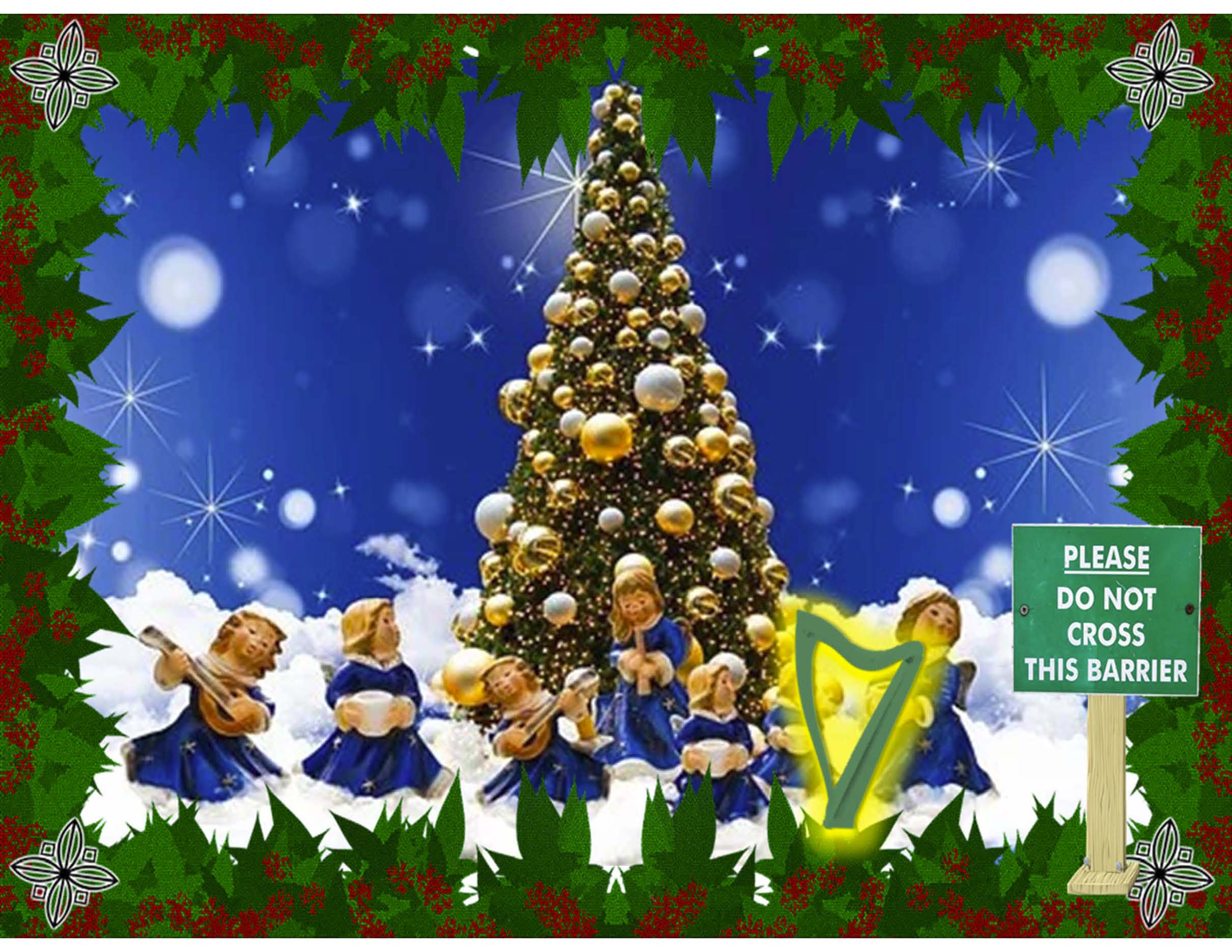 Well, Thanksgiving is in the books for another year. Thank you for all your lovely messages – they totally made my holiday that much more better!
Well, Thanksgiving is in the books for another year. Thank you for all your lovely messages – they totally made my holiday that much more better!As one holiday recedes in the rear-view mirror, it’s time to tee up the next event. Yup – the winter holidays. This is the time of the year when people who know you play the harp come out (in droves) to ask you to play for their event.
If you’re gigging (or hoping to), I hope you get mobbed with requests and that your calendar is so full that the added ink makes it perceptibly heavier!
However, if you are not really interested in gigging, you are reticent to perform, or you’re a new harper not quite ready to get out there, it’s time to establish some boundaries!
If you haven’t experienced this before, people are typically hungry for entertainment – especially at the holidays. They would love to provide you an opportunity to share your gift. Typically, they don’t fully understand what they are asking of you. And if you are new or relatively inexperienced, you may not fully understand what they are asking either (this is another “don’t ask me how I know this” moment).
So, before we hit full holiday stride, you need to ask yourself a few questions. By the way, there are no right answers.
1. Do you have enough repertoire to perform? How long are they asking you to play? Do you have enough seasonal tunes to fill that time? Not have you learned enough – do you have enough music ready to perform? That doesn’t mean you can just practice them for that same amount of time – rather, can you entertainingly fill the time comfortably? As an example, for a half hour performance, I aim for at least 15 carols. Ok, actually I aim for closer to 20 because I like to be prepared for randomness! But remember that these tunes are short, so even three times through will only last about a minute and a half. If you have 15 of these, that will be about 23 minutes. There is also the phenomenon of time on stage, where although it feels like time is slowing down (probably due to terror!), it is instead speeding up (probably because your natural metronome (your heart) is racing!) so what usually takes 23 minutes now only needs 20 and leaves you wishing you had five more tunes.
2. Do you feel prepared to perform? After all, these tunes are really well known so each misstep, jazz variation, arrangement variance (other people might call them mistakes but we know better!) feels huge. Like a pimple on prom night, these are much worse to you than to your audience, but each one is easier to weather with experience. Remember that performing is nothing like practicing in your living room – even if you are performing in your living room! This shouldn’t surprise you – it’s just like running through tough conversations in the mirror while you brush your teeth – the real conversation never goes like your rehearsal! You want to be confident in the tunes you have and that you can weather any variances that crop up.
3. Why? Yup, WHY. Why would you say yes? If the answer is that you are eager to play the event, then go for it! But if the answer is that you don’t know how to say no, put down that tuning key! If you can’t give a heartfelt “YES!” then repeat after me, “No. Thank you, but no.” Don’t elaborate. Don’t dither. Don’t explain. Don’t make excuses. Just don’t. If you are of a mind to, you could pass along the contact information for someone you know does want to, but you are under no obligation to do that. A variation of this question is “Will doing this enhance my holiday season? Or will it distract me and stress me out?” Are you ok with the answer?
4. What is my time worth to me? Let’s be honest – there are a lot of people who will want you to play for free. Are you ok with that? Another way to phrase the question is “Do I like the requestor well enough to give them a gift of (your perceived value of) my time? Because that’s what it is. When you’re calculating your perceived value, remember that it includes not only the performing time but also the preparation time (which is not insignificant). Because in the end, if you didn’t want to say yes but you did, you’ve given a very dear gift to someone you don’t esteem as well. Only you will pay that price.
Whether you are just starting out or are a seasoned pro, set your boundaries now. Know the answers to your questions and give the right answer for you. If you are ready to say yes, your tunes should already be ready (BTW if, as you read this, you are thinking that maybe you should start now, just say “maybe next year”!). And if your answer is no – stick to it! Practice saying it – out loud if you need to. Focus on assuring that your holiday season is enjoyable and happy rather than focusing on making everyone else’s holidays entertaining while you twist in a stress knot!
Because you know that we’ll go through this again next year, you might also consider one additional question – How do you define being ready should you decide you’d like to be for next year?
And remember, how you spend your time is up to you. Don’t allow anyone josh, cajole, press, bully, beg, or persuade you into performing if you’re not interested. If you are completely uninterested in playing for others, I give you leave to use my line that you “only play for the cat and the curtains” (this is particularly jocular if you do not have a cat!).
Get out your metaphorical post hole digger, we have boundaries to establish! How will you do that? Let me know in the comments!
-
Happy Thanksgiving!
Thank you for sharing your time with me and for sending your thoughts and comments. I wish you a fantastic day filled with genuine gratitude!
-
Are you a cheetah?
Cheetahs are really fast. They are purportedly the fastest animal on the earth, running faster than 100 MPH. They are sleek and optimized to go fast. They are amazing to watch.
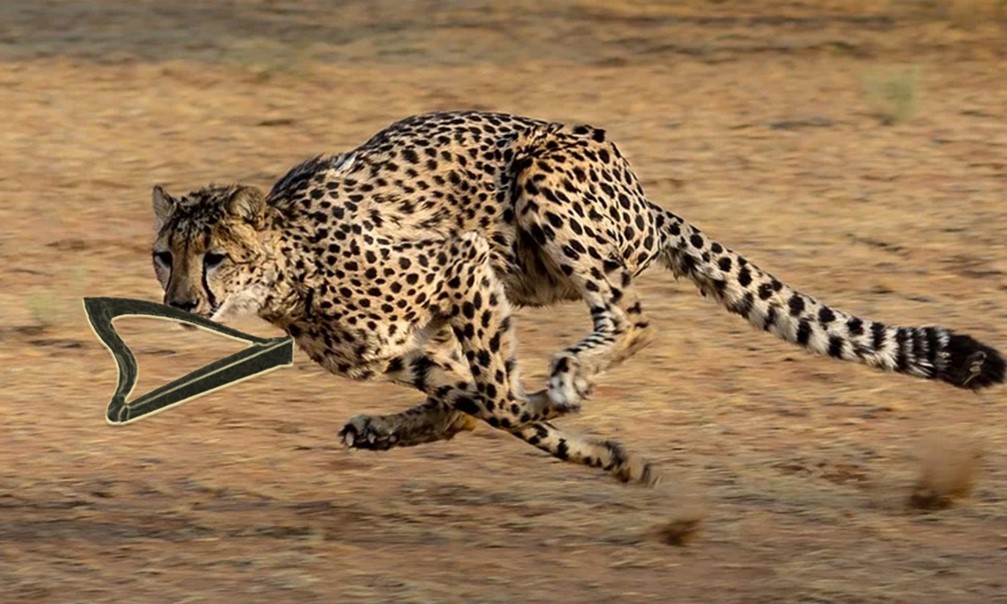 However, with great speed come great speed bumps! Cheetahs actually catch less than half of what they hunt because they are too fast! Since hunted things are motivated to get out of the way – they do! And worse, even if the cheetah does catch what they’re aiming for, they are often so spent that other, slower but stronger players often swoop in and steal the cheetah’s meal. And the cheetah couldn’t do much about it even if they weren’t exhausted because, while they’re fast, they don’t have sharp claws and they’re relatively weak. Yikes.
However, with great speed come great speed bumps! Cheetahs actually catch less than half of what they hunt because they are too fast! Since hunted things are motivated to get out of the way – they do! And worse, even if the cheetah does catch what they’re aiming for, they are often so spent that other, slower but stronger players often swoop in and steal the cheetah’s meal. And the cheetah couldn’t do much about it even if they weren’t exhausted because, while they’re fast, they don’t have sharp claws and they’re relatively weak. Yikes.You might wonder why we are on this gentle (ha!) walk through the Wild Kingdom? Because we can learn a lot from the cheetah.
To be successful hunters (and to have well fed bellies) cheetahs actually depend more on agility than they do on their speed. Stated baldly, a successful cheetah relies on great technique NOT speed.
They use that technique – even though they could rely on their speed – because even the cheetah knows that speed doesn’t lead to success – great technique does!
Further, the cheetah – and the smart harper – knows that carefully honing one’s technique will lay the groundwork for all the speed to be used masterfully rather than letting speed run the show.
The cheetah is a rare creature, beautiful to behold. Harpers are like that too.
Unlike the cheetah, who uses technique for hunting but doesn’t have a lot of tasks, we harpers need to develop a wide range of skills to perform all the tasks of playing our instruments and our music. The development of these techniques requires time and attention and practice which can be time consuming (and sometimes can be a little dispiriting).
Speed, on the other hand, is seductive. It whispers in your ear
“we could go even faster…if you’d just sacrifice a few, teensy-weensy details…like fingering, placing, tone, articulation, dynamics, posture, and planning. Whadaya say?”
And it’s very easy to fall prey to that silver tongued devil. Here in the secret privacy of our own private practice spaces – we can succumb and go faster – faster – faster. So what if we missed a note? So what if we dropped part of the phrase? Did we already play the repeat? Is that actually how it goes? It sounds perfect with no left hand, right? There was no gap while I tried to remember what came next, right? So what if it wasn’t completely smooth?
But eventually comes the time when we venture out and prepare to play – for a lesson or in front of others – and then the scales fall from our eyes as we learn that our sacrifices for speed have resulted in a haphazard, poorly played tune. And we feel it keenly. *
So, don’t be fast like the hungry cheetah. Rather, be precise and agile like the fed cheetah. Focus on tamping down your speed to instead let your technique take over. Ignore the seductive voice urging you play faster and instead heed the call to the dulcet tones of articulated, tempered, dynamic music. Be all the best qualities of the cheetah – without the spots!
* Don’t ask me how I know this.
-
And Now for Something Completely Different
One of the tenets of maintaining and growing your creativity is to always be trying something completely different. And here we go! This week I wanted to share another way to get yourself to your bench – by getting dinner on the table quickly but satisfyingly.
By sharing…a recipe!
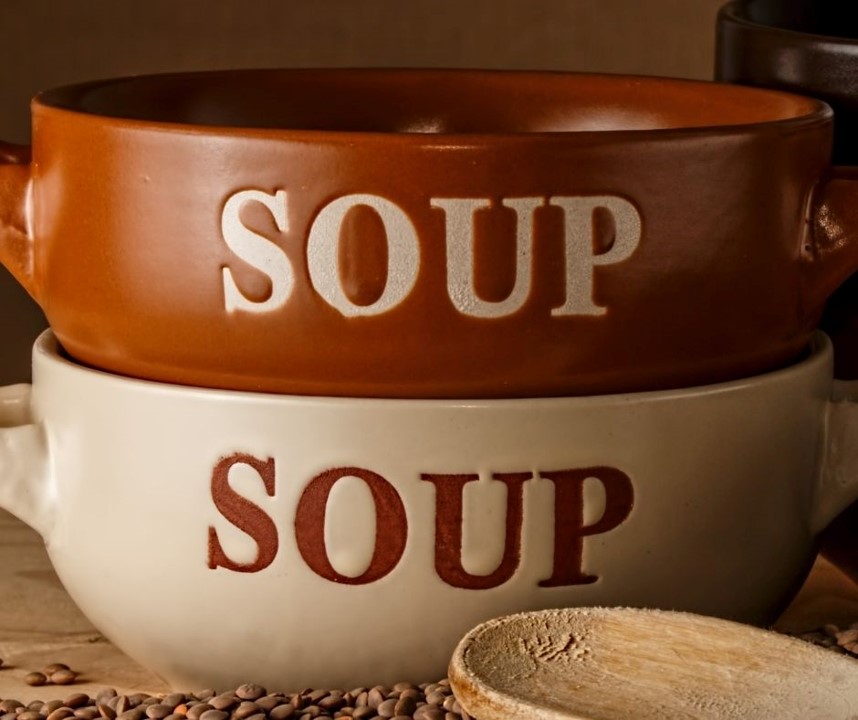 You may (or may not) know that I h-a-t-e to cook. I can cook. And I can cook well enough – with only a few minor catastrophes which I love to share (just to get out of it as much as possible). But I don’t find it enjoyable. As a chore it ranks slightly behind cleaning the bathroom.
You may (or may not) know that I h-a-t-e to cook. I can cook. And I can cook well enough – with only a few minor catastrophes which I love to share (just to get out of it as much as possible). But I don’t find it enjoyable. As a chore it ranks slightly behind cleaning the bathroom.But you do know that what I do find enjoyable is trying new things. Whether you’re good at it or not doesn’t matter, just giving it a go is worth all the outcomes.
So, I’m trying something new – sharing a recipe that I made up and hoping it is interesting (or at least amusing) to you. I know you’ll let me know what you think! Like all my projects, I sort of make it up as I go while hoping for the best. I’d urge you to do the same thing. Start where you are and end up where you got. Improvise. Try new things. Keep what you like. Add other stuff. Remember to write down what you liked (and note what you didn’t like so you don’t do it again).
Of course, the main point is getting yourself fed so you can get back to playing!
I hope you’ll give it a shot and let me know what happens. Even better, if you have a similar recipe that you have honed for yourself and are willing to share, I’d love to hear about it.
Jen’s Really Good Potato Soup
My made up recipe for a winter stable staple.Servings 8 hefty servingsEquipment
- Soup pot
Ingredients
- 2.5 lbs White potatoes, diced (or purple or golden or whichever you like best)
- 1 Tbs Salt (to boil potatoes)
- 2 Tbs Butter (Salted or un-, as you wish)
- 1 med Onion (use as much or as little as you like)
- 1 soupcon Garlic (to your palate)
- 4 cups Potato water from the water you boil the potatoes in
- 6 Chicken bouillon cubes
- 2 cups Heavy cream (you only live once, eat the cream)
- 2 cups Cheddar cheese shredded divided
- 15 slices Bacon cooked and minced
- 1 smidge Nutmeg (ground) to taste – you can always add more later so don't overdo it up front!
- Bacon bits for garnish
Instructions
- Dice the potatoes (so they'll cook faster) – peel or don't, as you prefer. I don't.
- In the soup pot, bring 6 – 8 cups of water, the diced potatoes, and the salt to a boil until tender – about 15 minutes.
- Put a colander in a large mixing bowl (or large pot). Pour the boiled potatoes into the colander and drain the water into bowl or pot. Set aside 4 c of the water and discard the remaining water.
- Return the soup pot to the stove and over medium heat, melt the Butter. Then add the onion and garlic and cook until translucent.
- Add the 4 c of water and the potatoes and bring to a simmer. Add bouillon cubes and dissolve.
- Reduce heat to low and add the cream (slowly and carefully), half the shredded cheese, the bacon, and the nutmeg. Return to simmer.
- To serve, top with remaining cheese and bacon bits to garnish. Serve with crusty bread.
Notes
This soup makes up really quickly so it’s perfect for those nights when you need to eat but really, really want to get to your harp! And although it’s nothing fancy, it gets rave reviews. Keeping the peels on the potatoes is a personal preference and I pretend that it makes it healthier because – you know – fiber. Reusing the water is not only eco, i think it improves the texture of the soup. Feel free to improvise – just like a good tune! I fiddle with this every time and never make it the same way twice. Have fun! -
What do you want less of?
We are strivers. Don’t believe me? Of course we are – we are always trying to be better harp players. We try to learn new music. We work to polish the music we already know. In other words, we strive to improve ourselves – we’re strivers!
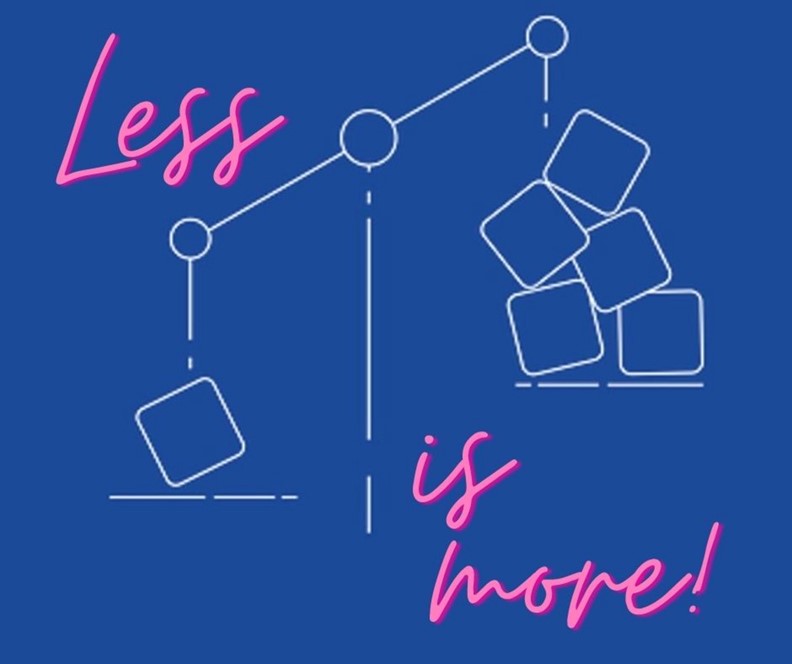 And, all in all, that’s a good thing. We work hard doing something we love, and we have very good reason to be very proud of our accomplishments. Add to that my unending exhortation that you practice, and you might be very confused by the headline.
And, all in all, that’s a good thing. We work hard doing something we love, and we have very good reason to be very proud of our accomplishments. Add to that my unending exhortation that you practice, and you might be very confused by the headline.Because I do always suggest you find more time to practice, that you be more organized, that your write down – oh, I don’t know – everything, and that you put yourself out there more. More, more, more – I’m always asking you to do more.
But not this week. This week, let’s turn that around –
What do you want to do less of?
Now, before you do the dance of joy, think carefully about what you’d like your answer to be. Because it’s worth examining not only what you’d like to do less of but also why you’d like to do less of it.
For instance, if you said you’d like to do scales less – why? And how? Do you just not want to do them at all? Or do you want to do fewer of them? What would you gain by doing them less?
What if you said you just wanted to spend less time practicing? Again, why? Not enjoying your time at the harp? That would be sad. Or is it that you feel like you spend all that time and maybe aren’t getting where you’d hoped you’d be?
You can do this little exercise – asking what you’d like to do less on – with just about every little thing that makes up your practice. This might lead you to ask “Why?” again. Here are five reasons to figure out what you’d like to do less of (and then actually do less of it):
- I want to spend less time sitting at my harp practicing. Is it the practicing that you want less of? Is it that you want to spend more time playing for enjoyment? If that’s it – maybe you need to manage your time at the harp a little more tightly – being sure to reserve time at the end to play for fun, to reconnect with your harp, to remember why you were practicing in the first place, to remember why you fell in love in the first place.
- I want to spend less money buying books. Ok, is this really a bad thing? Well, maybe a little (full disclosure, I believe that the correct number of books to have is the same as the correct number of harps – one more). If you find that you have too many books to use, or that the number of books you have is overwhelming, or that you’re just not using them, consider parting with some of them. First go through them and learn what it is about the books you don’t use that is keeping you from them (are the arrangements too hard, too easy, not your style? Was it your favorite book for a while but now, you know all the tunes and you do (or don’t) play them so you don’t need the book? Or did you never really take to the genre?). Now you can keep the books you need and want and dispose of the ones you don’t. How should you dispose of them? Well, you can have a book swap with your harp friends. Or have a book sale. You could donate them to a school program. You could sell them off. So many choices, all oriented to making sure you have less (actually fewer) books to deal with.
- I want to spend less time working hard. Sometimes we hang on to ways of working that may be “tried and true” but aren’t necessarily useful. If you are still making yourself play something 25 times perfectly before you will move on, you might be stuck there. There is no correct number of times to do something, so you might need a new metric for when something is learned. I’m sure it’s more than one repetition, but it’s probably not 25 either. I tend to be more focused on how the pass went (was I confident of the notes and their values? did I get the fingering with ease? did I feel like I had the time I needed to get from shape to shape?) than on how many I had banged through (or keeping count of how many I have done).
- I want to spend less time on mindless exercises. Ok, let’s start with the “mindless” exercises…exercises should n-e-v-e-r be mindless. They are not developed for vacuous completion. Each of them will teach you something, if you let it. Before you do any exercise (be it scales, arpeggios, or technical studies) you should know what it’s meant to help you with…and whether that is something you need to work on. My rule of thumb is that the more I think “I hate this” the more I need to do it – I’m hating it because it’s not easy, so I need to really knuckle under and do the thing. You’re probably more mature than me, so you probably have a better way of gauging this for yourself.
- I want to spend less time getting nowhere. Well, nowhere is often defined less by where you’re getting and more by knowing where you’re headed. Have you actually defined what you’d like to be doing or what the path there might look like? Why yes, this does sound suspiciously like having goals and knowing how you intend to achieve them. You could spend less time in aimless practice by spending a little more time figuring out where “there” is.
As much as I love playing my harp, do I also enjoy mindless hours grinding on music in various states of disrepair? NO, I do not. If you also do not, I’d suggest you spend a little time figuring out what you’d like to spend less time doing so you can spend more time practicing in a way that moves you to where you’d like to be. AND that you spend enjoyable time with your harp.
What would you like to strive to have less of or to spend less on? There are so many possible answers – what’s yours? Let me know in the comments!
-
How to Never Run Out of Things to Practice
Do you ever have that feeling like you’re casting about trying to decide what to practice? You know you should be practicing, but maybe you don’t know what to work on. Even if you have a teacher who helps structure your practice time, do you feel hesitant on where to start on other stuff outside your lesson?
No? It’s just me then?
Yeah, I didn’t think so.
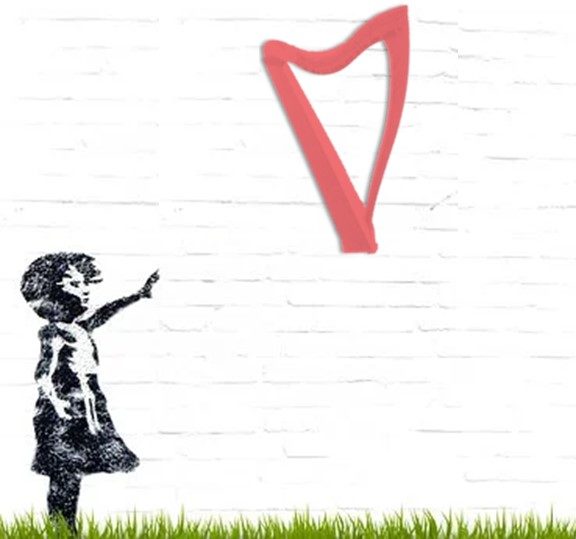 It can be a little challenging to think of what to practice, especially at those points on the calendar (like now) when we know we should have already started on holiday repertoire (but maybe haven’t). Or at the end of the year when you’re staring into the abyss of the upcoming year, but not knowing what you might want to come out of it with. Or thinking about the upcoming competition season and preparing to perform, but not being ready to buckle down.
It can be a little challenging to think of what to practice, especially at those points on the calendar (like now) when we know we should have already started on holiday repertoire (but maybe haven’t). Or at the end of the year when you’re staring into the abyss of the upcoming year, but not knowing what you might want to come out of it with. Or thinking about the upcoming competition season and preparing to perform, but not being ready to buckle down.There are all kinds of reasons that we can be a little stumped on what to be practicing at any one point in time. And if you’re an externally motivated person (that is, if you need something or someone outside of yourself to get you kicked into action), it can be very difficult to determine what you should be practicing, which can lead to procrastination….or worse, just not practicing!
So, this week, a few ways to help ensure that you never run out of things to practice!
1. Keep track of what you’re working on, how long you’ve worked on it, and your assessment of your progress to date. Why yes, this is just another thinly veiled suggestion that you keep a journal, but it will help you keep in mind what you’re working on right now (and how well it’s going) as well as whether you need to keep working on it. It also gives you an idea of which tunes might need to be parked so they can marinate for a little while (that’s fancy talk for “put it away and bring it out again later”).
2. Keep a list of tunes you would like to play. Just note them down, preferably with as much detail as possible (title, composer, anything else that helps you find it later). You can’t possibly learn all the tunes at once, so you will be well served to write down the ones you’d like to learn…later. Don’t worry about it getting too long – you can always add to it, or cross titles off as you go along (and you get the added bonus of crossing titles off as they move to your “learning” list! and you begin to practice them).
3. Focus on what you’re practicing now. When you’re practicing, don’t think about what you’ll practice next. Think about what you’re practicing now. Save thinking about what you’ll do another time…for another time… and actually practice while you’re practicing. If you have a great idea while you’re practicing, jot it on your list of tunes you’d like to play and then get back to your originally scheduled practicing.
4. Make connections between music you already know and that you have to learn. It is always useful to be a thinking musician. It’s an illusion that great musicians just sort of channel stuff. They are actively involved in the music they play. They analyze the music. They don’t let it just wash over them! Thinking about what you already know, what you’d like to learn and how they’re related will help you find tunes you like and will make practicing easier (because similar patterns will be easier the second time and even easier the third, etc.).
5. Be curious. It’s all well and good to know what you like and play that, but be curious about it – what is it about the music you love that captivates you? How far away from the exemplar can you go and still love it? What other music has those same traits? Does it appeal to you, and will you learn it? Being curious means you’ll find new things to play in places you wouldn’t necessarily look which not only broadens your repertoire but also will expand your thinking.
6. Refer to something you practiced before. Why yes, you can always practice something you used to play to death but haven’t in a while. Keep those oldies but goodies in your hands and in your memory so they’re ready to go when you are! Those tunes are, after all, the core of your repertoire.
Don’t be left feeling like you don’t know what to practice or how to get started. These six simple steps will help you pull it together so you can never run out of things to practice. What else should we add to the list? Let me know in the comments –
-
Harpa 2021 – HARPAntics in Western North Carolina!
Harpa have been having a fantastic time visiting Western North Carolina! This year, Harpa is Donna Bowers Bennett, Martha Hill, Therese Honey, Sue Richards and me. We have been delighted to share in three concerts and a church service at First Presbyterian Hickory. We have one more concert coming up but right now we’re enjoying a little down time. We’ve been sharing tunes, laughing, seeing sites and creating. This week on the blog, we’ll be light on words but photos instead! I, as usual, don’t even remember that I have a camera in my hand. All these photos are graciously shared by Donna Bennett,Therese Honey, and Martha Hill. Here we go:
We gathered and immediately started talking as well as planning what we would play! This, of course, lead to rehearsals and related down time. Our first concert was at the Ashe County Civic Center to a great audience…and an awesome green room! We had a blast and an excellent start to our tour.
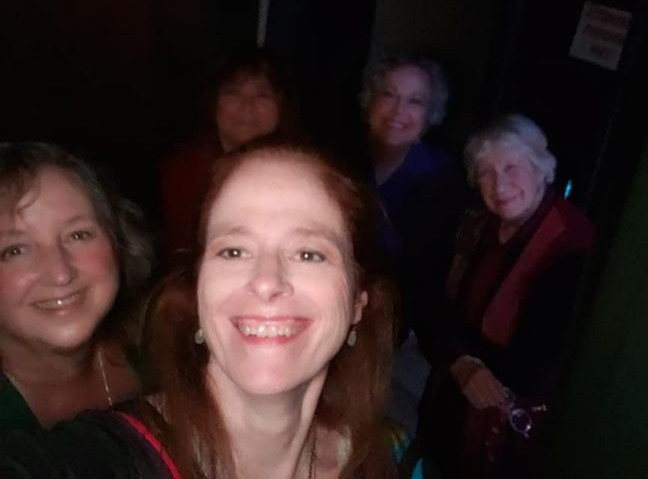
Fixing to go onstage, we have time for a selfie! Therese is an excellent selfie-starter! 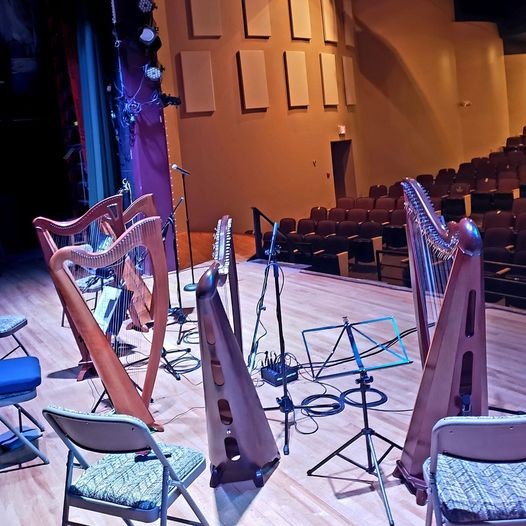
Sound check was quick and smooth with Mike the sound guy. No one ever thanks the sound guy enough. We stopped for dinner somewhere that had Cow Tails – well known to Marylanders (and former residents) but new to some. We marveled at the wording of the ingredients – they are highly refined, just like we are!
The next day we were in Black Mountain to play at the Black Mountain Arts Center, sponsored by the Arts Center – another lovely facility with a really warm audience. We spent the day enjoying the town of Black Mountain but we didn’t collect photos. Everyone was being like me, in the moment, not in the lens!
That evening the weather changed and we had a lovely wind symphony…all night long. However, the best thing about changeable weather is: rainbows and Donna capturing harps in nature:
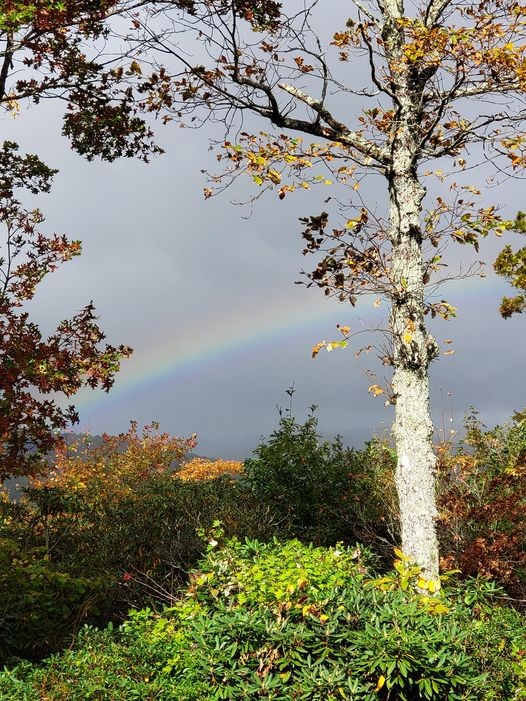
A rainbow is always a good sign (at a minimum it means we’re not moving harps in the rain!) 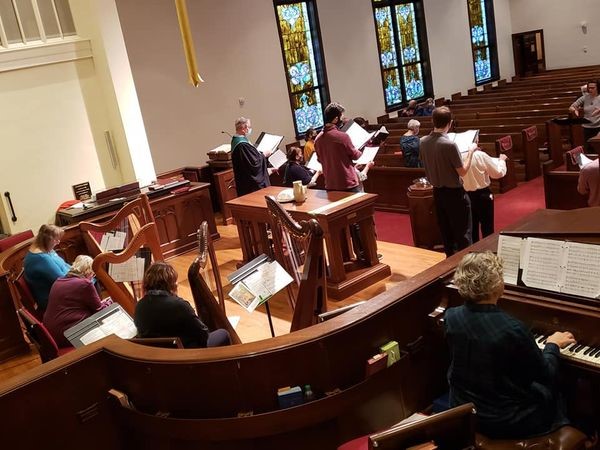
Preparing in First Presbyterian Church in Hickory NC So, Sunday dawned glorious and we headed to First Presbyterian Church of Hickory where we played the Gathering, Prelude, some of the hymns, and Postlude. There were a delightful group. Here we were preparing and warming up while the choir also made ready. After a bit of lunch we headed to the SALT Block Auditorium in Hickory to play a fundraiser in support of and sponsored by the Western Piedmont Symphony. Another excellent facility and audience.
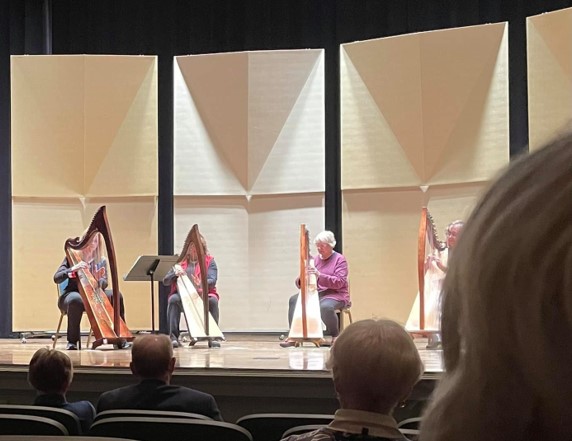
We really enjoyed playing in Drendel Auditorium We have one more concert at Morning Star Lutheran Chapel in Matthews, sponsored by Morning Star Lutheran Church Wednesday evening. If you’re in the area – come out!
I always have so much fun on our Harpa trips – playing and having shared time, missing our Harpaniks that haven’t been able to come this time…and planning our next outing! Where will go next? Remains to be seen. There is a video of us playing in Hickory and as soon as I have a link, I’ll share it!
